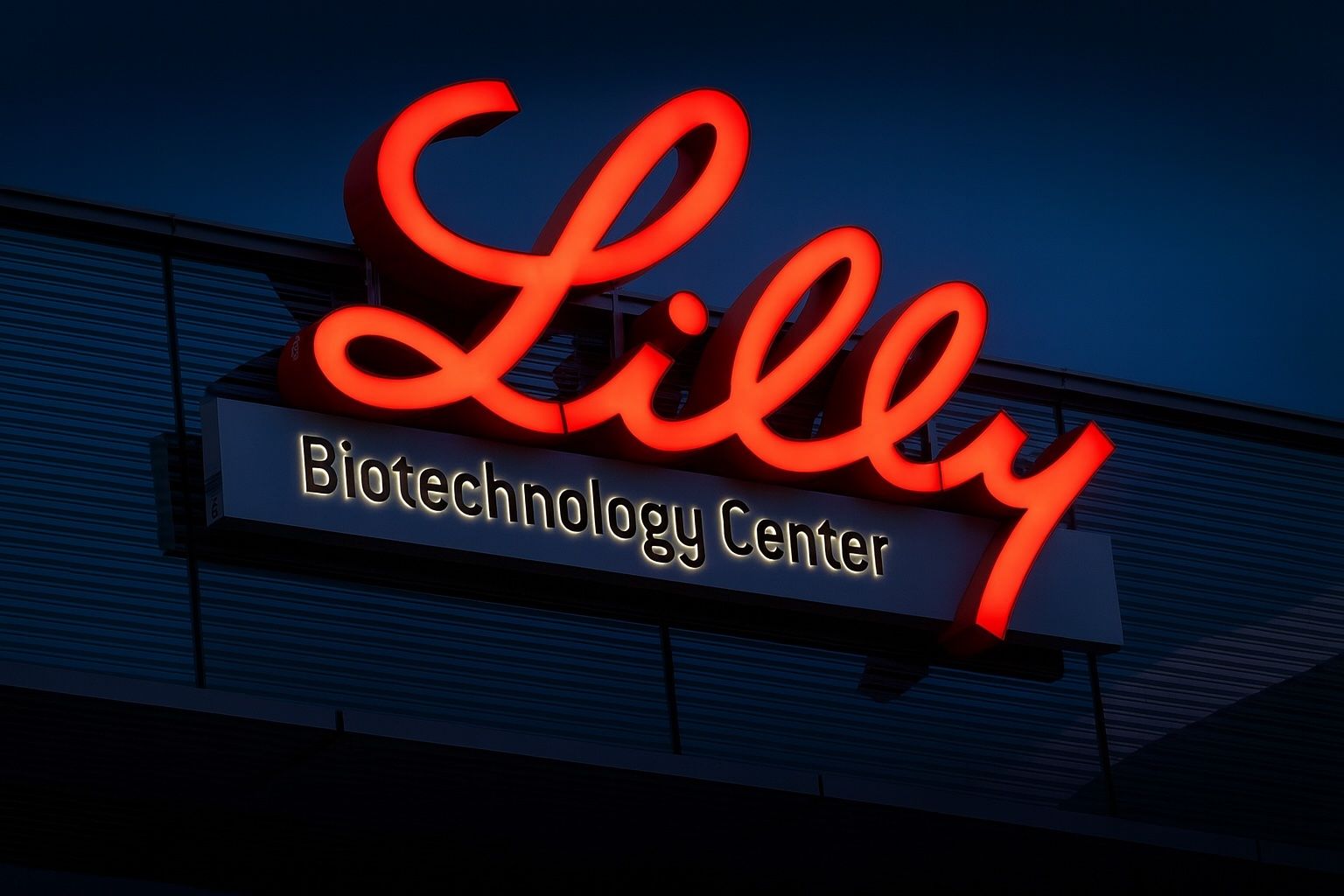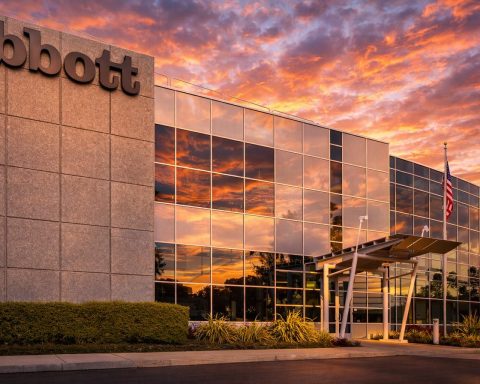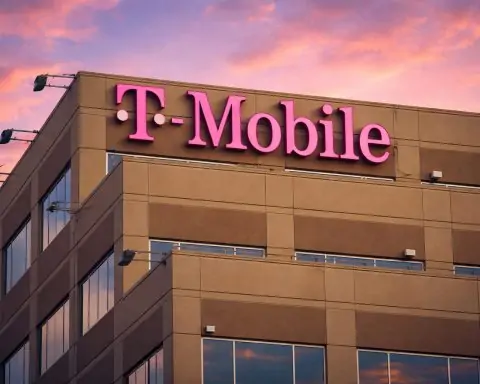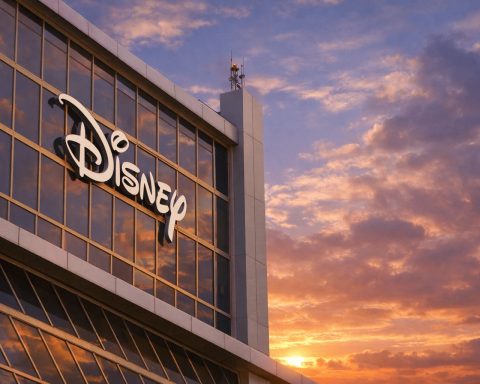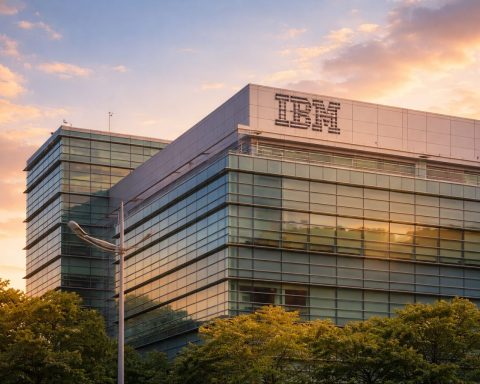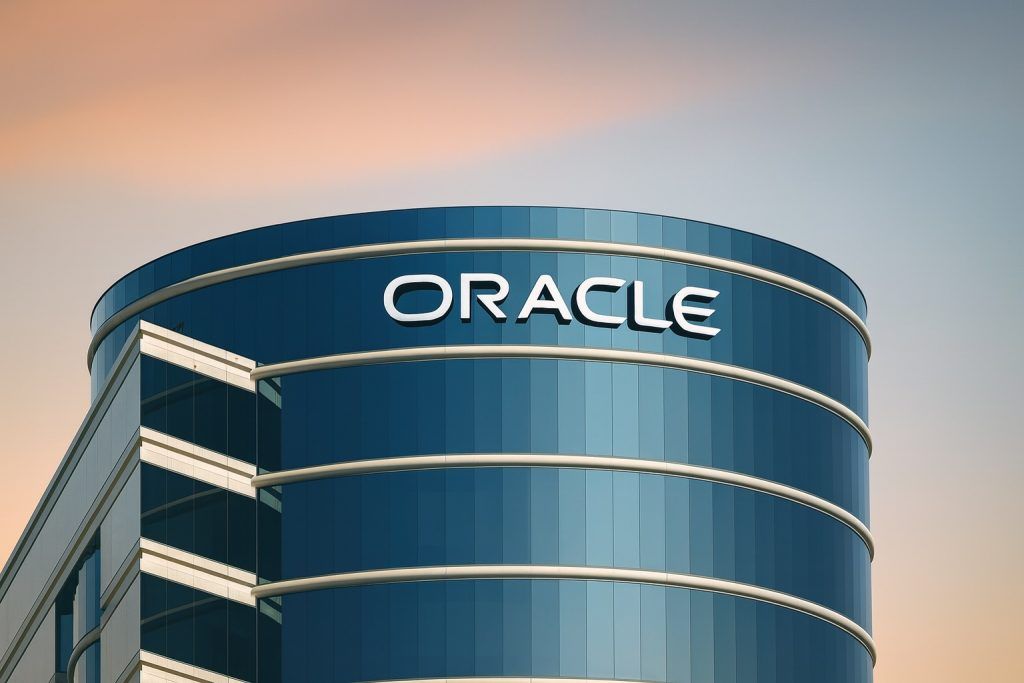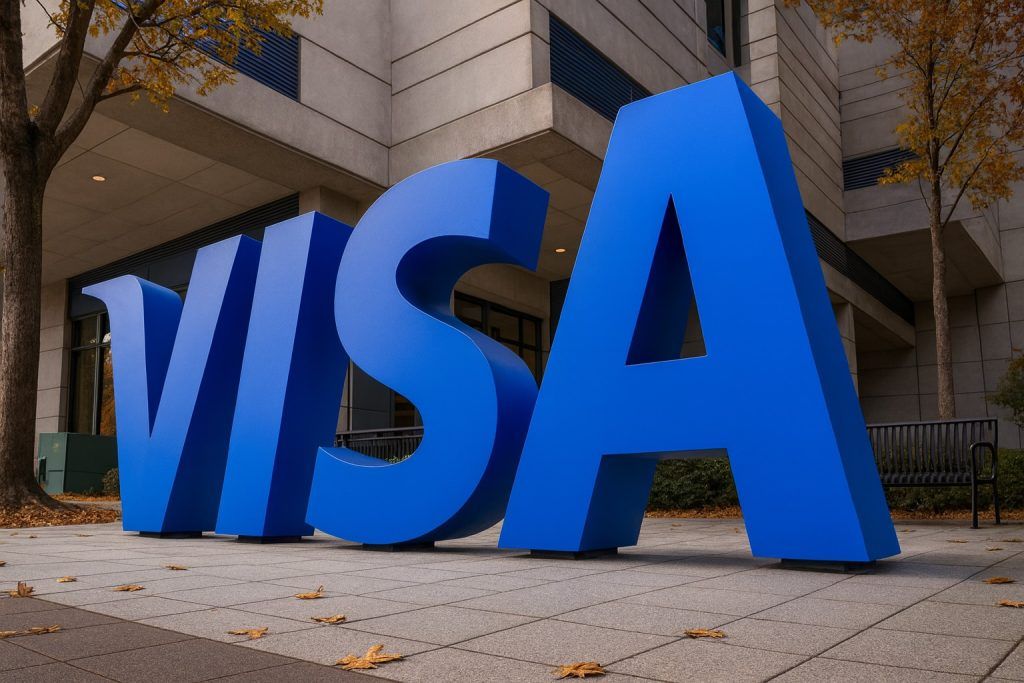- Price Performance: LLY leapt to ~$832 intraday on Oct. 1 amid obesity/Alzheimer’s drug news [1] and traded around $818 on Oct. 23 [2] (up ~6% YTD, in line with the S&P Health index [3]).
- Revenue Growth: Blockbuster GLP-1 drugs (Mounjaro, ZepBound) powered 45% Q1 and 38% Q2 sales growth; Q2 revenue hit $15.56B and EPS nearly doubled. Lilly raised 2025 sales guidance to $60–62B [4].
- GLP‑1 Market Share: Lilly commands ~57% of U.S. GLP‑1 obesity/diabetes prescriptions (versus ~43% for rival Novo Nordisk) [5]. Its growth (~40%+) far exceeds peers.
- Analyst Outlook: Wall Street is mostly bullish. About 32 analysts rate LLY a “Buy” (average 12‑mo target ≈$939 [6] [7]). Quant models range from ~$768 by end‑2025 to ~$1,030 by end‑2026 [8].
- Recent News: The EU approved Lilly’s Alzheimer’s antibody Kisunla in late Sept [9], and Lilly signed an India deal (with Cipla) to market its weight-loss drug under the brand “Yurpeak” [10] [11].
- Risks: President Trump’s pledge on Oct. 16 to slash GLP-1 drug prices (Ozempic/Wegovy) rattled the sector – LLY shares fell ~4% on the news [12]. High valuation (~49× earnings [13]) and policy changes could temper further gains.
Stock Performance and Recent Moves
Eli Lilly (NYSE: LLY) has been on a tear in October 2025. After closing around $726 on Sept. 29, the stock surged more than 9% in the following days, briefly spiking to about $832 on Oct. 1 [14] [15]. Trading volume was heavy and analysts pointed to a “perfect storm” of news – Eli Lilly’s weight-loss and Alzheimer’s drug advances were cited as key drivers. As one tech-stock analysis observed, traders noted “bullish options activity and growing excitement over Lilly’s weight-loss drugs and Alzheimer’s research” fueling the rally [16]. By Oct. 23, LLY was trading near $818 [17], solidly above its pre-September levels. Overall, the stock is up roughly 6% year-to-date, about matching the S&P 500 health-care index [18].
Mid-October brought volatility. On Oct. 16, U.S. President Trump vowed to slash the price of Ozempic (Novo Nordisk’s GLP-1 drug) to about $150/month [19]. Investors worried the measure could spill over to all GLP-1 treatments. Lilly – which sells similar drugs (Mounjaro, Zepbound) – saw its shares fall roughly 4% in sympathy [20]. The stock, which closed around $819 on Oct. 16, dipped into the high-$700s the following day [21]. The episode underscored a new risk: while demand for weight-loss drugs is roaring, potential price controls or reimbursements remain a wild card.
Growth Drivers and Company Developments
Fundamentals justify much of the optimism. Earnings are exploding. In Q2 2025, Lilly reported $15.56 billion in sales (up 38% YoY) and EPS of $6.31 (up ~92%), well above forecasts [22]. Management attributed this to blockbusters Mounjaro and ZepBound – combination GLP-1 therapies for diabetes and obesity – which lifted volume by over 40% [23]. Lilly subsequently raised its 2025 sales outlook to $60–62 billion [24], reflecting sustained demand. (For comparison, peers like Novo Nordisk grew about 18% in H1 [25].) Management also notes that only about 4% of eligible patients currently use GLP-1 drugs [26], suggesting plenty of runway if Lilly can keep its share.
Lilly has been busy advancing its pipeline. In late September the European Commission approved donanemab (brand name Kisunla) for early-stage Alzheimer’s disease [27], after the FDA had updated its U.S. label in July. Lilly and Roche also won FDA clearance for a blood test (pTau181) to speed Alzheimer’s diagnosis – a development said to potentially “speed uptake” of treatments like Kisunla [28]. In cancer, the FDA in September approved Inluriyo (imlunestrant) – a once-daily breast cancer pill for certain metastatic patients – which Lilly executives touted as a convenient new option [29].
On the metabolic front, Lilly’s oral GLP-1 candidate, orforglipron, posted strong Phase 3 results this year (around 10–12% weight loss in trials) [30] [31]. Another obesity drug, eloraklimab (XLIM), showed very promising early data (over 11% weight loss at 12 weeks) in June [32], hinting at future combo therapies. The company has even bought up biotechs to deepen its pipeline: 2025 acquisitions include SiteOne Therapeutics (non-opioid pain) and Verve Therapeutics (gene-editing for cardiovascular disease) [33].
Lilly is scaling up production to meet growing global demand. In October it agreed to invest over $1 billion in India through local manufacturing partnerships [34]. Executive Patrik Jonsson emphasized these are “significant investments to increase manufacturing and medicine supply capacity around the world” [35]. (Lilly already announced a $5 billion, state-of-the-art factory in Virginia – part of a $27 billion U.S. expansion plan [36] – to ensure domestic supply of its drugs.) On Oct. 23 Reuters reported Lilly signed a landmark deal with India’s Cipla: Lilly will supply its weekly obesity injection for local sale under a new brand name (Yurpeak) [37]. This comes after Lilly’s Mounjaro launch in India doubled sales within months [38], and reflects Lilly’s strategy to tap huge emerging markets.
Analyst Sentiment and Stock Outlook
Wall Street remains overwhelmingly positive on LLY, though a few concerns linger. According to MarketBeat data, analysts have a “Moderate Buy” consensus with an average 12-month target around $939 [39]. A trading report noted that among 32 covering analysts, the median price target is $900 and most recommend Buy [40] [41]. Quantitative models vary: one forecast puts LLY at about $768 by end-2025 but surging to ~$1,030 by end-2026 [42], reflecting expected momentum in Lilly’s core markets. (Longer-term models, as cited by ts2.tech, even show LLY reaching multi-thousand dollar levels by 2030, though such far-horizon forecasts carry huge uncertainty [43] [44].)
Analysts have highlighted Lilly’s robust growth drivers. For example, RBC Capital markets noted that if donanemab succeeds commercially, it could expand the Alzheimer’s treatment market tenfold, adding roughly $4 billion in U.S. sales [45]. TipRanks and other investment sites have linked Lilly’s rally to strong earnings, management share-buybacks, and enthusiasm around its GLP-1 and Alzheimer’s franchises [46] [47]. Insider activity has also supported the stock – some reports noted company executives and directors buying shares in recent weeks.
At the same time, valuations are rich. Lilly trades near 49× forward earnings, well above big-pharma peers [48]. This suggests expectations are lofty. Some skeptics warn the stock may be vulnerable if results disappoint or if generics and competitors accelerate. As one analysis cautioned, Lilly’s steep valuation and intense competition (especially from Novo Nordisk), plus any policy shifts, “could temper the stock’s meteoric rise.” [49]. Investors will likely monitor upcoming quarterly results for signs of continued volume gains or pricing headwinds.
Industry and Competitive Context
Lilly’s surge occurs amid a flurry of activity in pharma. Novo Nordisk, its GLP-1 rival, has recently stumbled: its share price slid about 3% on Oct. 22 after its biggest investor pushed for a sweeping board overhaul [50]. (Novo’s stock is down roughly 45% YTD [51] amid concerns over U.S. pricing and growth.) Analysts note that Lilly now holds a majority of U.S. GLP-1 prescriptions (57% vs Novo’s 43%) [52], reflecting the U.S.-first sales strategy that’s boosted Lilly’s numbers. However, Novo still dominates globally and is working on next-gen obesity drugs (e.g. oral semaglutide competitors). As Nordnet analyst Per Hansen noted, the Novo board shake-up adds to investor nerves “ahead of third-quarter results, with worries ranging from Medicare pricing talks in the U.S. to competition from Eli Lilly in the weight-loss drug market.” [53]
Beyond GLP-1, large pharma is chasing biotechs. Pfizer’s deal on Sept. 29 to lower drug prices under a U.S. program sparked a run-up in drug stocks – Lilly was the biggest gainer following that news [54]. Industry watchers are asking who’s next: Reuters quoted analysts saying Lilly (and AstraZeneca) could be on deck for their own deals with the administration [55]. (Lilly declined to comment on any discussions, and AstraZeneca has yet to strike a comparable pact.) Many large drugmakers, including Lilly, have announced major U.S. investments and expansions to meet new policy incentives [56] [57].
Meanwhile, healthcare megatrends still favor Lilly’s market. Obesity and diabetes rates remain high worldwide – India, for example, is projected to have the world’s second-largest obese population by 2050 [58]. Lilly’s recent actions (launching Mounjaro in India, partnering for distribution, expanding production) aim to capture that demand. At the same time, generic competition is on the horizon: India’s pharma industry is gearing up to launch generic semaglutide (Wegovy) once patents expire, which could pressure pricing across the board [59]. Policymakers in the U.S. and EU are also scrutinizing drug costs, as seen in Trump’s comments and legislative proposals.
Outlook
In summary, Eli Lilly’s stock sits near record highs on the back of blockbuster obesity and metabolic drugs, strong financial results, and an ambitious growth strategy [60] [61]. Sentiment is broadly bullish: most analysts see further upside, targeting the mid‑$900s or beyond [62] [63]. For investors, the key questions will be: Can Lilly sustain its GLP-1 momentum? Will new treatments (oral GLP-1, Alzheimer’s, etc.) meet lofty expectations? And will political or competitive factors (price cuts, generics, Novo’s pipeline) slow the pace? If the obesity-drug boom continues and Lilly avoids major setbacks, $1,000 a share could be within reach. However, any sign of trouble – from trial failures to pricing crackdowns – could trigger a pullback. For now, though, the market is rewarding Lilly’s growth story, even as it bids a premium for future success [64] [65].
Sources: Recent news and analysis from TechStock² (ts2.tech) [66] [67], Reuters [68] [69], Bloomberg [70], and other financial media as cited. All data are as of Oct. 23, 2025.
References
1. ts2.tech, 2. www.tradingview.com, 3. www.tradingview.com, 4. ts2.tech, 5. ts2.tech, 6. ts2.tech, 7. www.tradingview.com, 8. ts2.tech, 9. ts2.tech, 10. www.reuters.com, 11. www.tradingview.com, 12. ts2.tech, 13. ts2.tech, 14. ts2.tech, 15. ts2.tech, 16. ts2.tech, 17. www.tradingview.com, 18. www.tradingview.com, 19. ts2.tech, 20. ts2.tech, 21. ts2.tech, 22. ts2.tech, 23. ts2.tech, 24. ts2.tech, 25. ts2.tech, 26. ts2.tech, 27. ts2.tech, 28. ts2.tech, 29. ts2.tech, 30. ts2.tech, 31. ts2.tech, 32. www.reuters.com, 33. ts2.tech, 34. ts2.tech, 35. ts2.tech, 36. ts2.tech, 37. www.reuters.com, 38. www.reuters.com, 39. ts2.tech, 40. www.tradingview.com, 41. www.tradingview.com, 42. ts2.tech, 43. ts2.tech, 44. ts2.tech, 45. ts2.tech, 46. ts2.tech, 47. ts2.tech, 48. ts2.tech, 49. ts2.tech, 50. www.reuters.com, 51. www.reuters.com, 52. ts2.tech, 53. www.reuters.com, 54. www.reuters.com, 55. www.reuters.com, 56. www.reuters.com, 57. www.reuters.com, 58. www.reuters.com, 59. www.reuters.com, 60. ts2.tech, 61. ts2.tech, 62. ts2.tech, 63. www.tradingview.com, 64. ts2.tech, 65. ts2.tech, 66. ts2.tech, 67. ts2.tech, 68. www.reuters.com, 69. www.reuters.com, 70. www.bloomberg.com
